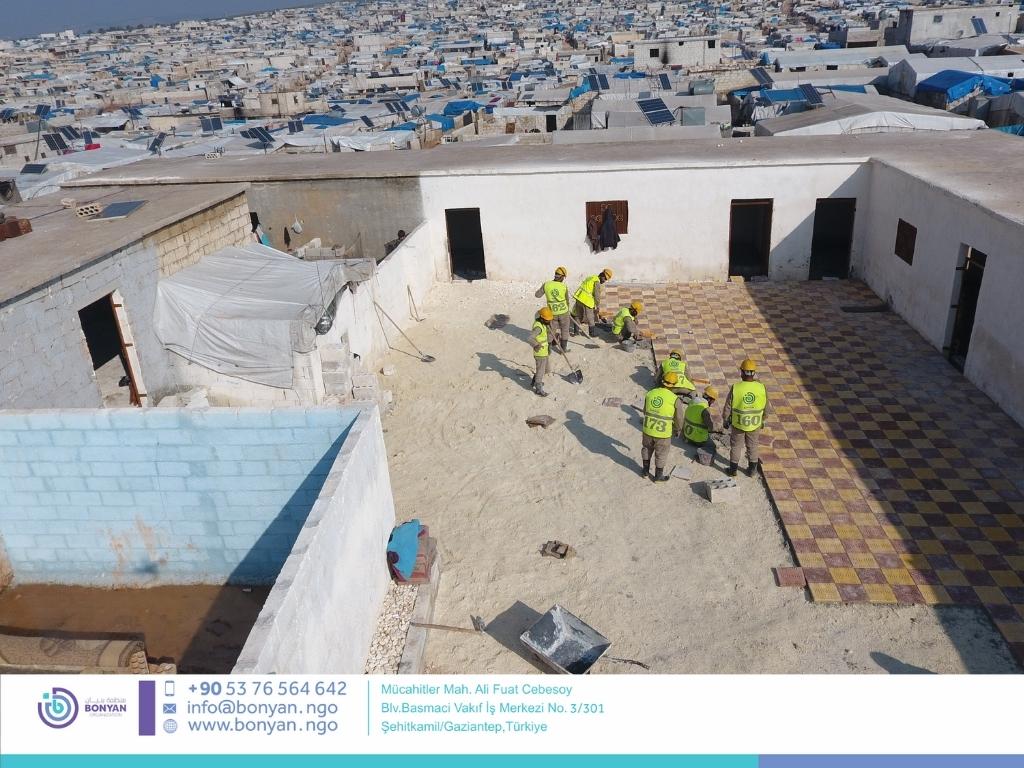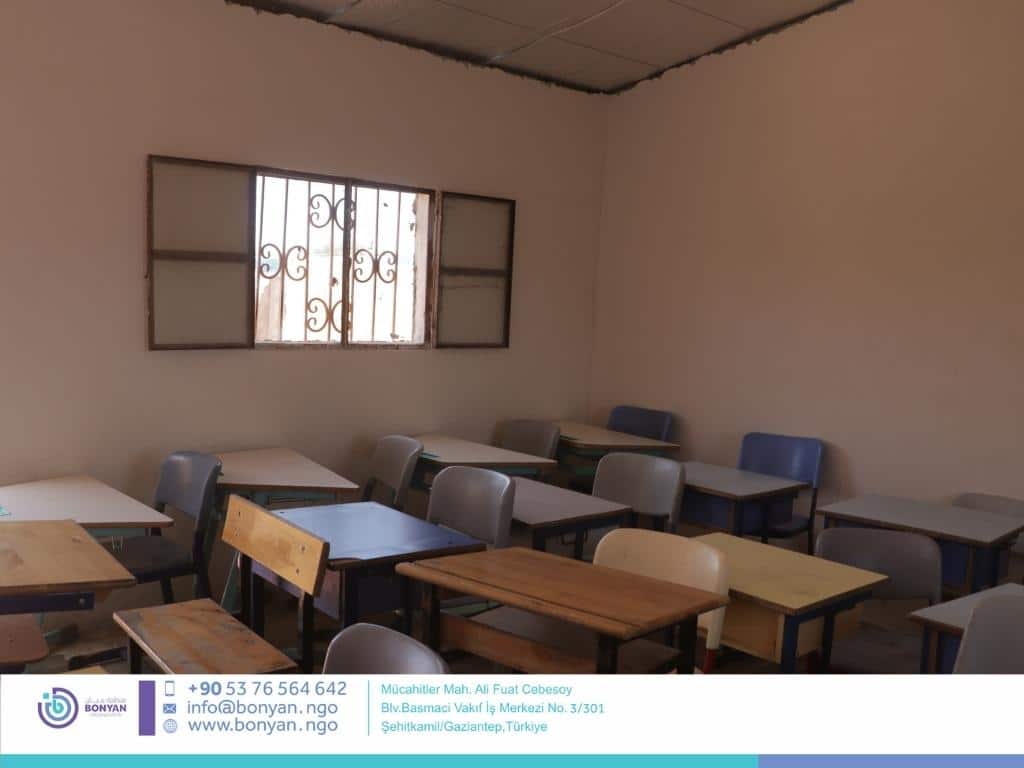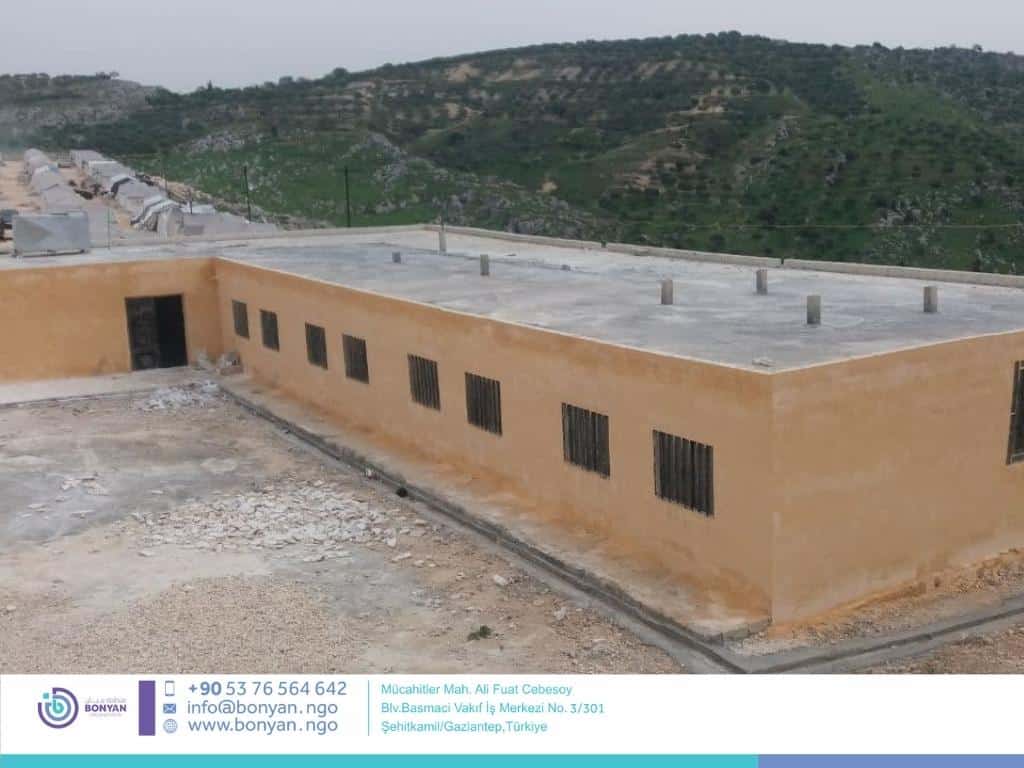In war-torn regions, shattered school buildings echo the pain of communities. This article highlights the vital effort to restore these educational hubs, delving into the challenges and victories of rebuilding.
The effects of the war on the educational sector
War and conflict have profound impacts on the educational sector, affecting both institutions and infrastructure.
Damage and Destruction
Educational infrastructure becomes a casualty of war, with schools and facilities often experiencing severe damage or outright destruction. The consequences extend beyond physical harm, adversely impacting the learning environment.
The ruins of educational institutions symbolize not only the destruction of buildings but also the disruption of a stable and conducive space for intellectual growth and development. This devastation impedes the continuity of education, exacerbating the challenges faced by both educators and students.
Reduction in Spending
Wars exert financial strain on governments, often resulting in a reduction or complete cancellation of educational spending. This fiscal constraint limits the resources available for schools and educational programs, hindering the ability to provide quality education.
The consequence is a compromised educational system, with inadequate funding impeding the implementation of essential teaching materials, infrastructure maintenance, and teacher training programs.
Loss of Learning Opportunities
The displacement caused by war disrupts the regular rhythm of students’ lives, leading to significant interruptions in their education. Forced migration and the challenges of living in conflict zones contribute to a higher likelihood of incomplete primary schooling.
The loss of learning opportunities becomes a poignant manifestation of the broader societal disruptions caused by armed conflict.
Psychological Impact on Students
Beyond the visible destruction, the psychological toll of war on students is profound. Exposure to conflict can result in psychological disorders, and the pervasive sense of fear may lead to social isolation.
The emotional scars borne by students affect their overall well-being, creating a complex web of challenges that extend far beyond the immediate educational context.
Effects on Curriculum and Enrollment
Wars impact the fundamental components of education, influencing curriculum, enrollment rates, and student morale. The disruption caused by conflict forces a reassessment of educational priorities, often leading to changes in curriculum content to address emerging needs.
Additionally, enrollment rates may fluctuate due to the challenges posed by war, and the overall morale of students is affected by the uncertainties and disruptions experienced in conflict-ridden regions.

Benefits of building schools in war-affected areas
To address the profound effects of war and conflict on education in conflict zones, a crucial step is the construction of schools. This initiative holds immense value due to its myriad benefits for education and students alike.
Educational Continuity
Establishing schools not only ensures a stable environment for learning but also becomes a beacon of hope amid the challenges of conflict. In war-affected areas, where disruption is prevalent, schools provide a consistent and structured space where children can pursue their education.
This continuity becomes a vital lifeline, offering young minds the opportunity to thrive academically despite the adversities.
Psychosocial Support
Beyond textbooks and classrooms, schools serve a dual purpose as essential hubs for psychosocial support. In the aftermath of war, children often grapple with the trauma experienced. Schools become therapeutic environments, offering a structured setting for emotional healing.
Education transcends its traditional role, becoming a powerful vehicle for nurturing emotional well-being and resilience.
Protection Against Recruitment
Education emerges as a formidable shield against the recruitment of children into armed groups. Schools act as protective bastions, reducing the vulnerability of children to exploitation and recruitment tactics.
By providing a safe haven, education becomes a proactive measure in safeguarding the future of the younger generation, steering them away from the perils of involvement in armed conflicts.
Access to Vital Services
Schools in war-affected regions evolve into pivotal centers, not only fostering education but also serving as gateways to vital services. Beyond the classroom, these institutions become access points for healthcare and various essential services.
This multi-faceted role enhances overall community well-being, ensuring that the impact of education extends far beyond academic pursuits.
Community Resilience
The establishment of schools goes beyond individual empowerment; it becomes a strategic investment in community resilience. By nurturing the skills and capacities of the future generation, education becomes a catalyst for rebuilding societies shattered by conflict.
It lays the foundation for a more sustainable and stable community, fostering resilience and progress in the face of adversity.

Challenges in School Building and Restoration in war-torn and conflict zones
Constructing and rehabilitating schools in conflict zones poses a formidable challenge due to various obstacles.
Military Use of School Buildings
In conflict zones, the misuse of school infrastructure for military purposes is a prevalent issue, posing a dual threat to the safety of educators and students.
Combatants repurpose these educational institutions, exposing them to the inherent dangers associated with armed conflicts.
Vulnerability of Education Infrastructure
Education infrastructure becomes a prime target for exploitation by belligerent groups in conflict zones. This vulnerability emphasizes the critical need to prioritize the protection of schools, ensuring a safe environment for the continuation of learning.
Traumas and Exploitation
The educational system grapples with the immense challenge of shielding children and youth from the psychological traumas and exploitation prevalent in wartime conditions.
Clear and effective protective measures are essential to mitigate the long-term impact on the well-being of the students.
Budget Constraints and Mismanagement
The consequences of armed conflicts extend to the education sector, leading to reduced government budgets and mismanagement. This financial strain results in a compromised student-to-teacher ratio, hindering the quality of education delivery.
Disrupted Educational Pathways
Conflict disrupts educational pathways at the school level, causing a ripple effect on teacher presence, teaching quality, and overall educational services. The negative impact on these fundamental elements hampers the continuity of effective learning experiences.
Material Scarcity
The destruction and looting of educational buildings during conflicts contribute to a scarcity of materials required for effective teaching and learning. This material deficit becomes a significant barrier, impeding the provision of essential educational services in war-affected regions.

Bonyan Organization’s efforts in supporting the educational sector and building schools in conflict and war zones
Bonyan Organization is at the forefront of change, dedicating unwavering efforts to support the educational sector and construct schools in conflict and war zones. Your involvement can directly contribute to these impactful initiatives.
In areas scarred by conflict, We are committed to creating a positive transformation through education. The organization actively builds schools, providing essential infrastructure in regions where educational opportunities are often scarce. Your support helps in constructing safe havens of learning, fostering an environment where children can thrive despite the challenges surrounding them.
Bonyan’s commitment extends beyond the construction of physical structures. We work tirelessly to enhance the overall educational sector in these zones. This includes supporting formal and non-formal education, technical and vocational training, and capacity building for teachers.
By investing in education, Bonyan empowers communities, offering a pathway to a brighter future.
Join Bonyan in building a better tomorrow in conflict zones through education. Every contribution plays a vital role in constructing schools, providing access to education, and nurturing the minds of those impacted by war.
Build Hope: Support Bonyan’s School Construction and Educational Initiatives Today!



